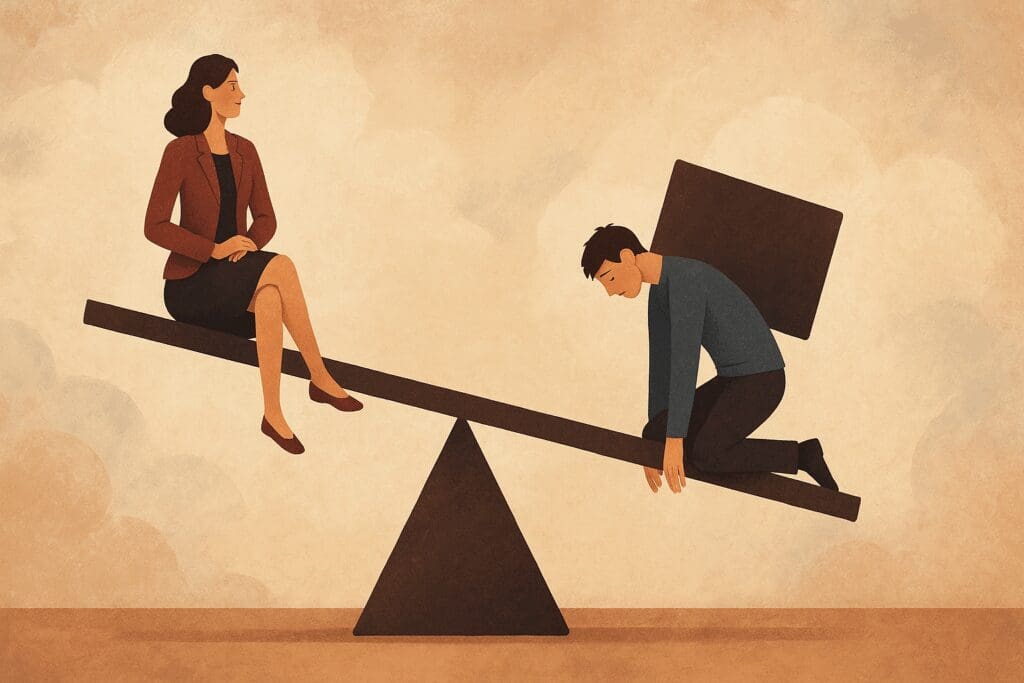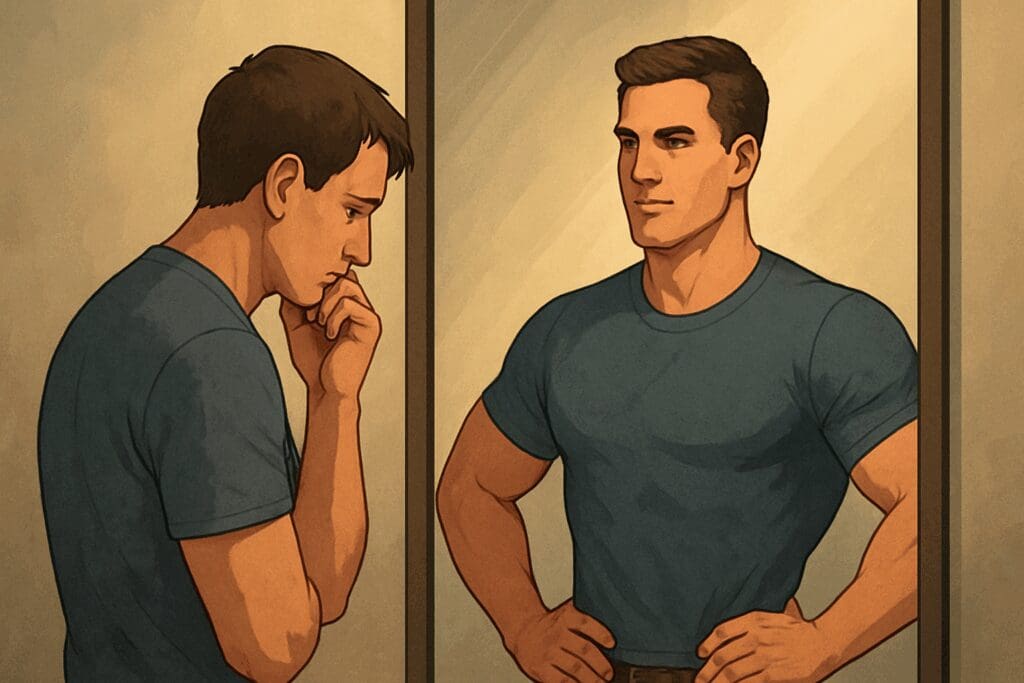Erectile dysfunction is a subject often explored through the lens of biological or physiological causes, yet increasingly, psychological dynamics within a relationship are recognized as influential, particularly in long-term intimate bonds. While the question may initially seem provocative or even misleading, it’s valid to ask: can a woman cause erectile dysfunction in the context of an otherwise healthy romantic or sexual partnership? This inquiry isn’t about blame but about understanding the intricate interplay of mental, emotional, and relational factors that contribute to sexual health. In fact, both partners’ behaviors, perceptions, and emotional patterns can significantly shape sexual outcomes, including instances of male erectile dysfunction (ED) and female sexual dysfunction. By exploring this subject with empathy and scientific grounding, we can open pathways to better communication, greater intimacy, and more effective treatment of arousal disorder and other sexual health challenges.
You may also like: The Vital Link Between Sex and Hormones During Menopause: What Every Woman Should Know
The Complex Interplay of Psychology and Sexual Function
Sexual function is never isolated to the physical domain; rather, it exists in a multidimensional space encompassing biology, emotional connection, cognitive patterns, and interpersonal dynamics. While hormonal balance, blood flow, and neurological pathways are critical to arousal and performance, psychological stressors—especially those rooted in the intimate partner relationship—often play a pivotal role in disrupting sexual function. Erectile dysfunction can be the result of a subtle cascade: anxiety about performance, perceived emotional disconnection, or even unresolved resentment can silently inhibit arousal and response mechanisms.
In this context, a woman may indirectly contribute to ED not because of malicious intent or overt rejection, but through miscommunication, conflicting expectations, or unconscious emotional distancing. This is not to suggest that women cause dysfunction deliberately, but rather that the dynamics within a couple’s relationship—ranging from emotional validation to power structures—can influence sexual function on both sides. Indeed, sexual arousal disorder in either partner can create feedback loops that amplify tension and diminish desire.

Understanding How Female Behavior and Emotional Signals Impact Male Sexual Response
Men’s sexual response systems, while biologically governed, are highly sensitive to cues from their partners. These cues are not limited to overt sexual invitations but include a wide array of emotional and psychological signals: the tone of a conversation, patterns of eye contact, gestures of affection, and the underlying emotional climate. If a woman routinely conveys disinterest, criticism, or emotional withdrawal—whether intentionally or unconsciously—her male partner may begin to associate intimacy with anxiety or rejection, creating a powerful psychological block.
This phenomenon becomes particularly relevant in relationships where unspoken expectations or unmet needs fester beneath the surface. For example, a woman may not verbally criticize her partner’s performance, but a subtle sigh, a distracted glance, or an unenthusiastic response can sow seeds of doubt. Over time, the man may internalize a belief that he is undesirable or inadequate, which translates into anxiety during sexual encounters. This can initiate a self-fulfilling prophecy: anxiety leads to ED, which leads to more anxiety, eroding confidence further.
Can a Woman Cause Erectile Dysfunction Through Communication Patterns?
Communication is the scaffolding of intimacy. When a woman communicates harshly, passively-aggressively, or inconsistently, it can create confusion and emotional instability for her partner. Male sexual arousal relies heavily on a feeling of emotional safety and positive reinforcement, even if these are not always articulated openly. In relationships where communication is riddled with blame, sarcasm, or emotional manipulation, a man may begin to retreat—not only emotionally but sexually.
Conversely, some men experience ED in relationships where communication becomes too clinical or performance-oriented. If a woman expresses dissatisfaction in a way that emphasizes technique over connection, her partner may start viewing sexual activity as a test rather than a shared experience. This shift can lead to performance anxiety, which is a well-documented psychological trigger of erectile dysfunction. The key insight here is that a woman’s communication style—especially around intimacy—can either nurture sexual confidence or erode it gradually.
The Role of Emotional Attunement and Female Sexual Arousal Disorder
One of the often-overlooked contributors to erectile dysfunction is the phenomenon of emotional attunement—or rather, the lack thereof. Men and women are both emotionally complex beings, but men may be particularly sensitive to perceived emotional disconnection during sexual interactions. When a man senses that his partner is emotionally distant, distracted, or uninterested, he may experience an unconscious drop in arousal. This is especially true when female sexual arousal disorder is present.
Female arousal disorder, a form of female sexual dysfunction, is characterized by reduced responsiveness, limited genital sensation, and difficulty achieving or maintaining arousal despite desire. In partnerships where this condition is poorly understood or inadequately addressed, the male partner may interpret his partner’s lack of physical or emotional engagement as rejection. This can lead to anticipatory anxiety before intimacy even begins. The consequence is often erectile difficulty—not because of a physical failure, but because the sexual interaction has become fraught with emotional risk.
When women with sexual dysfunction do not communicate their experience openly, their partners may misread cues and internalize blame. In this sense, the psychological burden becomes shared, even though the physiological symptoms may initially appear in only one partner. Without compassionate, honest dialogue, both partners can spiral into patterns of avoidance, tension, and mutual dissatisfaction.

How Relational Power Dynamics Contribute to Sexual Dysfunction
Relationships are rarely immune to shifts in power and control, especially as they mature. These shifts can be subtle or explicit, and they often manifest in the sexual domain. In some cases, a woman who holds more relational or emotional control—whether through dominance, economic leverage, or emotional detachment—may unintentionally disempower her partner sexually. This doesn’t imply wrongdoing, but it does highlight how perceived imbalances can contribute to sexual distress.
A man who feels emasculated, disrespected, or irrelevant in his relationship may struggle with arousal. Erectile function is intimately tied to confidence and identity; when these are threatened, dysfunction often follows. In certain cases, the woman’s behavior—such as consistently undermining, criticizing, or ignoring her partner—may corrode the psychological conditions necessary for arousal. This is not to say that assertiveness or independence in women is problematic, but that when it comes with dismissiveness or emotional disengagement, it can inadvertently sabotage sexual harmony.
Moreover, the modern discourse around gender roles can further complicate these dynamics. As men and women renegotiate expectations around leadership, intimacy, and emotional labor, unspoken resentments may surface. If these tensions are left unaddressed, they can crystallize into chronic sexual dysfunction on both sides, manifesting as erectile difficulties in men or arousal disorders in women.
Can a Woman Cause Erectile Dysfunction by Withholding Affection?
Affection is the emotional currency of romantic connection. When it is withheld—whether intentionally as a form of punishment or unintentionally due to emotional fatigue—it sends a powerful signal of rejection. Men, though often socialized to minimize their emotional needs, are deeply impacted by this deprivation. If a woman frequently withholds touch, warmth, or expressions of desire, her partner may begin to feel unwanted or invisible. Over time, this emotional drought can erode sexual confidence and responsiveness.
This issue becomes even more pronounced when sexual activity is used as a bargaining tool. Conditional intimacy, where affection is only given when certain behaviors are met, transforms a loving act into a transaction. Men may become wary of initiating intimacy, fearing rejection or criticism. Eventually, this chronic state of vigilance can trigger performance anxiety and contribute to the development of erectile dysfunction, even in otherwise healthy individuals.
Interestingly, this pattern often coincides with symptoms of sexual arousal disorder in women. When a woman experiences low desire or physical discomfort during sex, she may begin withdrawing emotionally to avoid confrontation or guilt. Her partner may sense this retreat but be unsure how to respond. In the absence of clear communication, a complex web of avoidance, fear, and dysfunction can form—crippling both partners’ sexual confidence.

Emotional Contagion: The Shared Experience of Sexual Dysfunction
Sexual energy within a relationship is rarely unilateral; it is a shared field shaped by mutual perceptions, expectations, and emotional rhythms. When one partner struggles with arousal—whether it’s a man with ED or a woman experiencing sexual disorders—there is often a reciprocal effect on the other. This concept, known as emotional contagion, explains how one partner’s psychological state can influence the other’s physiological response.
For example, a woman who harbors unspoken shame or trauma around her body may unconsciously convey discomfort during intimacy. Her partner, attuned to these subtle cues, may experience anxiety about triggering further distress, leading to decreased arousal. Similarly, women with sexual dysfunction may project frustration or detachment, which a male partner may internalize as personal failure. This bidirectional emotional loop can fuel a downward spiral where arousal becomes increasingly difficult to achieve for both individuals.
Understanding this dynamic requires shifting from a blame-based framework to one rooted in emotional intelligence. Rather than asking, “Is she causing my dysfunction?” the more constructive inquiry becomes, “What are we co-creating emotionally that may be contributing to this challenge?” This shift invites both partners to examine their internal landscapes and interpersonal patterns without defensiveness, fostering a more compassionate path toward resolution.
Can a Woman Cause Erectile Dysfunction Through Mismatched Libido or Desire?
One of the most common—yet often overlooked—sources of relational sexual tension is mismatched libido. When one partner desires sex more frequently than the other, it can create an ongoing emotional dilemma: the high-desire partner may feel neglected, while the low-desire partner may feel pressured or guilty. In many heterosexual relationships, this dynamic skews in either direction, but when a man perceives that his partner is rarely interested, it may deeply affect his sense of desirability and masculine identity.
In time, this dissonance can manifest as performance anxiety or sexual shutdown. A man may start to doubt his ability to arouse his partner, interpreting her disinterest as a reflection of his inadequacy. This is especially relevant in relationships where female arousal disorder or female sexual dysfunction is present. If a woman struggles with arousal or finds physical intimacy uncomfortable, she may avoid sexual contact altogether. Without context or compassionate dialogue, her partner may conclude that the issue lies with him.
This misunderstanding can quickly evolve into a destructive cycle: the woman feels overwhelmed or ashamed of her low desire, while the man becomes increasingly anxious about initiating sex. Eventually, his anxiety may inhibit physiological arousal, resulting in erectile dysfunction. What began as a medical or hormonal issue in one partner becomes a psychologically driven dysfunction in the other, highlighting the interconnectedness of sexual health in intimate relationships.
Can a Woman Cause Erectile Dysfunction by Failing to Validate Her Partner’s Sexual Identity?
Sexual identity and performance are often deeply intertwined for many men. When their sense of sexual self is met with indifference, ridicule, or consistent invalidation, it can produce profound psychological distress that culminates in erectile dysfunction. This distress may stem not only from overt criticisms but also from subtle cues that undermine a man’s sense of desirability, competence, or masculine affirmation. For instance, when a woman jokes dismissively about her partner’s sexual habits or preferences, even in seemingly playful contexts, it can erode his confidence over time.
This dynamic is especially complex when coupled with unaddressed sexual arousal disorder or other sexual disorders in women. A woman’s reduced responsiveness or lack of interest may not be accompanied by a clear explanation or mutual strategy for reengagement. In such cases, her male partner may interpret her disinterest as rejection of him as a sexual being, even if the root issue lies within her own physiology or past experiences. The result is often a silent retreat from vulnerability—a withdrawal from both emotional and physical intimacy.
Healthy sexual expression relies on mutual validation. This doesn’t mean uncritical praise, but a supportive space where both partners feel safe exploring their desires and vulnerabilities. Without such validation, a man may internalize negative self-perceptions that interfere with arousal. Eventually, these internalizations may manifest physically as ED, even in the absence of any biological impairment.
The Influence of Trauma and Female Sexual Dysfunction on Male Performance
Trauma—especially when unacknowledged—can have lasting effects on both partners’ sexual wellbeing. Many women experience some form of sexual, emotional, or relational trauma during their lifetime, and its impact can reverberate long after the event itself. When such trauma remains unresolved, it often shows up in the form of female sexual dysfunction, difficulty with trust, or disengagement during intimacy. Men who are emotionally attuned may sense this disconnection but feel powerless to address it directly, especially if their partner is reluctant to discuss the issue.
This dynamic creates a fragile and unpredictable sexual environment. Each attempt at intimacy becomes a potential trigger—for the woman’s trauma or for the man’s fear of doing harm. The result is often psychological paralysis. Over time, the man may begin to anticipate difficulty and experience preemptive anxiety, a precursor to erectile dysfunction. What’s more, the man may hesitate to initiate sexual contact out of respect, only to be perceived as withdrawn, setting off a cycle of misunderstanding and sexual detachment.
In these scenarios, communication becomes essential. Trauma-informed dialogue allows couples to address sexual dysfunction with sensitivity and shared responsibility. Rather than pathologizing either partner, it creates space for healing and mutual growth. When women with sexual dysfunction feel seen and supported, they are more likely to re-engage sexually. Simultaneously, men are freed from the burden of silent anxiety, reducing the psychological tension that contributes to ED.

Navigating Arousal Disorders in Women Without Triggering ED in Men
When dealing with sexual arousal disorder in women, many couples face a difficult paradox: the more the male partner tries to help, the more performance-oriented the interaction becomes, diminishing spontaneity and increasing pressure. This pressure often backfires, reinforcing the woman’s arousal difficulties while simultaneously causing anxiety in the man. Eventually, both partners come to dread intimacy, associating it with failure, frustration, or disappointment.
The key to breaking this cycle lies in reframing the sexual experience as one of mutual exploration rather than achievement. Arousal should not be a goal but a process—one that is sensitive to emotional states, context, and timing. This requires patience, creativity, and above all, emotional presence. Men who focus solely on performance may miss the subtler cues of their partner’s comfort and openness, while women may feel further disconnected by the emphasis on outcome rather than connection.
Importantly, treating arousal disorder in women should not be approached in isolation. When both partners engage in the therapeutic journey—through counseling, education, or guided intimacy exercises—they build shared resilience. This shared approach fosters empathy, reduces pressure, and protects against the psychological stressors that often lead to erectile dysfunction. In short, a woman’s sexual challenges need not translate into dysfunction for her partner—so long as both individuals feel supported and emotionally attuned.

Redefining Masculinity and Its Link to Erectile Function
Contemporary understandings of masculinity are evolving, but many cultural messages still equate manhood with sexual prowess, control, and performance. When these expectations go unmet, it can cause an existential rupture in self-perception. Men may interpret erectile difficulties not just as a physiological glitch but as a failure of identity. When this perception is reinforced—explicitly or implicitly—by a partner, it deepens the wound and heightens the psychological barrier to arousal.
Some women, without malice, may reinforce these narratives through comparisons, subtle criticisms, or unmet expectations that are never clearly articulated. Even well-intended questions—such as “Why don’t you want me anymore?”—can provoke shame and anxiety, especially if the man is already grappling with self-doubt. This creates a paradox: the more a man tries to fulfill a rigid ideal of masculinity, the more vulnerable he becomes to dysfunction, because anxiety and arousal are fundamentally incompatible.
To counter this, couples must embrace a more holistic vision of masculinity—one that values emotional transparency, adaptability, and mutual care. Erectile function is not a barometer of manhood, but one aspect of a broader relational dynamic. When women support this reframing, they help reduce the psychological triggers that cause erectile dysfunction and open the door to more authentic, satisfying intimacy.
Can a Woman Cause Erectile Dysfunction by Avoiding Sexual Conversations?
One of the most profound yet often overlooked contributors to sexual dysfunction is silence. When women avoid conversations about sex—whether due to discomfort, past trauma, or cultural conditioning—they inadvertently create a vacuum filled by assumption, fear, and misinterpretation. Men, socialized to appear stoic or sexually confident, may not express their concerns openly either. The result is a double-silence that amplifies anxiety and erodes intimacy.
In relationships where sexual conversations are absent or surface-level, men may find themselves guessing their partner’s desires, boundaries, and emotional state. This guessing game creates stress, especially during intimate moments. Fear of doing something wrong—or not doing enough—can heighten self-consciousness, which often leads to ED. Meanwhile, the woman may sense her partner’s hesitation and interpret it as disinterest, perpetuating a cycle of disconnection.
To break this cycle, intentional and compassionate communication is vital. Talking about sex doesn’t have to be clinical or awkward; it can be playful, curious, and deeply bonding. When a woman expresses her preferences, fantasies, or even her insecurities, she creates a space for mutual discovery. In this environment, arousal becomes an emergent experience rather than a pressured performance, dramatically reducing the likelihood of erectile dysfunction rooted in psychological strain.
Shared Healing: Addressing Female Sexual Dysfunction and Male ED Together
Sexual dysfunction is rarely a solo struggle—it exists in the relational field, shaped by both partners’ experiences, expectations, and emotional histories. When a woman experiences female sexual dysfunction, the ripple effect can touch every aspect of the relationship, including her partner’s sexual confidence. Likewise, when a man struggles with ED, it can stir feelings of inadequacy, guilt, or rejection in his partner. Recognizing this shared vulnerability is the first step toward healing.
Rather than viewing dysfunction as a problem to be fixed in isolation, couples benefit from adopting a collaborative model of healing. This may involve couples counseling, sex therapy, or mutual exploration practices such as sensate focus, mindfulness exercises, or therapeutic touch. In this model, both partners acknowledge their roles—not in a blame-centered way, but through a lens of curiosity and growth.
Healing together also means redefining success. Instead of measuring intimacy by erections or orgasms, couples can shift toward a broader definition that includes emotional closeness, sensual touch, laughter, and creative expression. In this redefined space, dysfunction becomes less of a failure and more of a signal—an invitation to deepen understanding, renew trust, and co-create a more resilient sexual connection.
What Is ED in Women and How Does It Parallel Male Dysfunction?
While erectile dysfunction is commonly discussed in men, a parallel form exists in women, often referred to as female erectile or arousal disorder. Despite anatomical differences, the physiological and psychological components of female sexual dysfunction mirror those of ED. Women may experience reduced genital engorgement, lubrication challenges, or diminished responsiveness, often accompanied by anxiety, low self-esteem, or relationship stress.
Understanding what is ED in women requires shifting away from a purely mechanical model of sex. Female arousal is deeply contextual, often dependent on emotional safety, relational connection, and internal states of relaxation. When these conditions are unmet—due to stress, trauma, or discord—women may find it difficult to become or remain aroused. This mirrors the psychological dynamics that lead to ED in men, suggesting that both experiences are rooted in the interplay of emotion and physiology.
By acknowledging this parallel, couples can develop deeper empathy for each other. A man who understands his partner’s arousal disorder may feel less blamed for her disinterest, while a woman who recognizes the psychological roots of ED may offer more compassionate support. This mutual insight is essential for transforming sexual dysfunction into an opportunity for shared growth and renewed intimacy.
Empowering Women in Sexual Health Conversations Without Inducing Performance Anxiety
Empowerment in sexual relationships is not about control; it is about presence, agency, and mutual respect. When women feel empowered to express their needs, desires, and limits, they foster a climate of trust and exploration. However, this empowerment must be paired with emotional sensitivity. If a woman asserts her preferences in a way that shames or pressures her partner, she may inadvertently contribute to performance anxiety and ED.
Effective empowerment involves dialogue, not directives. Instead of saying, “You never do this,” a more fruitful approach is, “I would love if we tried this together.” This framing invites collaboration rather than confrontation. It also reassures the male partner that his worth is not contingent on flawless performance, but on his willingness to engage, learn, and grow.
This is particularly important in relationships where both partners are navigating arousal disorders or past disappointments. When empowerment is grounded in love and respect, it becomes a healing force. It allows both partners to feel safe in their vulnerability, transforming the bedroom from a place of pressure into a sanctuary of connection and renewal.
Frequently Asked Questions: Emotional, Social, and Physiological Triggers Behind Sexual Dysfunction in Women and Men
1. Can a woman cause erectile dysfunction through emotional detachment or chronic criticism?
While the phrase can a woman cause erectile dysfunction may suggest a direct physical link, it’s more accurate to explore the indirect psychological pathways. Emotional disconnection, frequent belittling, or unresolved resentment in a relationship can create performance anxiety in men, which is a leading non-organic cause of erectile dysfunction. This form of stress triggers a chronic cortisol response that disrupts the hormonal balance necessary for arousal. Over time, consistent negative reinforcement from a partner can lead to conditioned anxiety, where the brain begins to associate intimacy with failure or judgment. Addressing communication breakdowns and working on emotional safety can be as vital as medical intervention when it comes to preventing psychogenic erectile issues.
2. What is ED in women and how is it misunderstood in clinical settings?
The question what is ED in women often leads to confusion because traditional erectile dysfunction is anatomically male-specific. However, women experience physiological analogs—such as lack of clitoral engorgement or vaginal lubrication—both of which are signs of female erectile difficulties. These symptoms are rarely labeled explicitly in diagnostic manuals, contributing to underdiagnosis. Moreover, clinicians often misattribute these issues to psychological causes without exploring the hormonal, vascular, or neurological contributors. Educating healthcare professionals to identify female sexual dysfunction as a multi-dimensional issue can vastly improve diagnostic accuracy and treatment outcomes.
3. How does a partner’s sexual trauma history affect female arousal disorder?
Female arousal disorder is deeply rooted not only in physiological responses but also in trauma-informed neurological patterns. Women who have experienced sexual trauma may dissociate or exhibit delayed arousal due to amygdala hyperactivation, which interprets intimacy as a threat. This condition is distinct from simple disinterest or low libido—it is a survival-based reaction. In relationships, this may inadvertently create emotional and sexual distance that impacts both partners, including potential feelings of rejection that influence male performance. Trauma-informed therapy and gradual, trust-based intimacy exercises are essential in treating this subtype of female sexual arousal disorder.
4. How can relationship dynamics influence both partners’ sexual disorders?
Mutual dissatisfaction, conflict avoidance, or power imbalances can breed sexual disorders in women and men alike. A woman feeling unheard or overburdened may experience female sexual dysfunction due to chronic stress and adrenal fatigue. Simultaneously, her male partner may suffer anxiety-induced erectile dysfunction. These conditions feed into each other in a loop that can only be broken through systemic approaches like couples’ therapy, stress management, and re-negotiating intimacy roles. Recognizing the relational origin of dysfunction allows for more targeted interventions beyond pharmacological prescriptions.
5. Can hormonal imbalances in women mimic or exacerbate sexual arousal disorder?
Absolutely. A drop in estrogen and testosterone—common during perimenopause, postpartum periods, and certain endocrine disorders—can drastically reduce genital sensitivity and lubrication, leading to symptoms mistaken for disinterest. This biological form of sexual arousal disorder in women can be misinterpreted as emotional withdrawal or avoidance. In relationships, this misunderstanding can escalate to resentment or misdirected blame, especially when partners assume a lack of desire equals lack of love. Hormone replacement therapy, alongside counseling, can help recalibrate both physical readiness and emotional intimacy.
6. Can a woman cause erectile dysfunction by expressing sexual dissatisfaction?
This is a nuanced aspect of the broader question can a woman cause erectile dysfunction. While dissatisfaction alone doesn’t “cause” ED, the way feedback is delivered can significantly impact male confidence. Harsh or poorly timed criticism—especially during or after intimacy—can instill a fear of inadequacy that disrupts arousal cycles. Over time, men may begin to associate sexual encounters with judgment, which fosters a cycle of performance anxiety. Constructive conversations, ideally outside the bedroom, are crucial in preserving emotional and sexual confidence.
7. How are female erectile difficulties treated differently from male ED?
Unlike male ED, which often has standardized treatments like PDE5 inhibitors, female erectile challenges are frequently overlooked or dismissed. This stems from the mistaken belief that arousal in women is purely emotional. However, poor blood flow to the clitoris or thinning vaginal walls due to estrogen loss are real physiological obstacles. Treatments may include estrogen creams, clitoral vacuum devices, or pelvic floor therapy—all of which are underutilized in mainstream medicine. Women with these issues often benefit from a multidisciplinary approach that includes both gynecological and psychosexual therapy components.
8. What is the role of cultural narratives in the development of sexual disorders in women?
Cultural conditioning that frames female sexuality as shameful or passive can lead to internalized guilt and eventually manifest as female sexual dysfunction. For example, women taught to prioritize others’ needs may suppress their own desires, leading to an inability to experience or even recognize arousal. These deeply ingrained beliefs act as subconscious inhibitors, contributing to conditions like sexual arousal disorder or persistent genital arousal disorder. Addressing these challenges requires more than clinical treatment; it involves unlearning societal norms and embracing sex-positive education that reclaims agency and pleasure.
9. How does female sexual dysfunction impact long-term relationships?
Women with sexual dysfunction often feel alienated from their own bodies, and this internal struggle can translate into relational tension. Partners may interpret withdrawal as rejection, while women may experience guilt or inadequacy for not meeting perceived expectations. This emotional rift grows over time, reducing not only physical intimacy but also overall relational satisfaction. Couples that engage in open, non-judgmental dialogue and explore non-penetrative intimacy often report higher resilience. Therapeutic practices like sensate focus can re-establish connection and circumvent pressure-laden encounters.
10. Can performance pressure on women contribute to female sexual arousal disorder?
Performance anxiety is often framed as a male concern, but women are equally susceptible, particularly in cultures that expect them to be both desirable and effortlessly orgasmic. This dual expectation often leads to dissociation, a core element of female sexual arousal disorder. When women feel they are “failing” at intimacy—whether through inability to climax or disinterest—they internalize the experience as personal failure. Unlike men, whose dysfunction is often externalized through visible symptoms, women tend to silently endure, delaying diagnosis and treatment. Empowering women to prioritize their own pleasure, without obligation, is critical to reversing this trend.
Conclusion: Emotional Intelligence Is the Key to Understanding If and How a Woman Can Cause Erectile Dysfunction
The question “can a woman cause erectile dysfunction” cannot be answered with a simple yes or no. Rather, it invites a deeper examination of how intimate relationships shape and are shaped by psychological, emotional, and sexual dynamics. While a woman does not cause ED in the sense of being solely responsible, her behavior, emotional availability, and communication style can significantly influence her partner’s sexual wellbeing.
Erectile dysfunction is rarely isolated from the relational context in which it occurs. Emotional distance, mismatched libidos, unspoken expectations, and female sexual dysfunction all play a role in creating an atmosphere where ED may emerge—not as a failure, but as a symptom of unresolved emotional or psychological tension. By understanding this broader framework, couples can move beyond blame and into healing.
The path forward lies in empathy, emotional intelligence, and open dialogue. Couples who face sexual dysfunction together—with honesty, vulnerability, and mutual support—often find that their connection deepens in unexpected ways. Instead of viewing ED or female arousal disorder as personal failures, they become opportunities for growth, exploration, and renewal.
Ultimately, love is not measured by performance but by presence. In the journey of healing sexual dysfunction—whether rooted in psychology, biology, or both—the most powerful medicine is compassion. For men and women alike, that compassion begins with the courage to see each other not as problems to solve but as partners in the complex, beautiful, and deeply human dance of intimacy.
Further Reading:
Female sexual arousal disorder
Female Sexual Dysfunction: Therapeutic Options and Experimental Challenges



